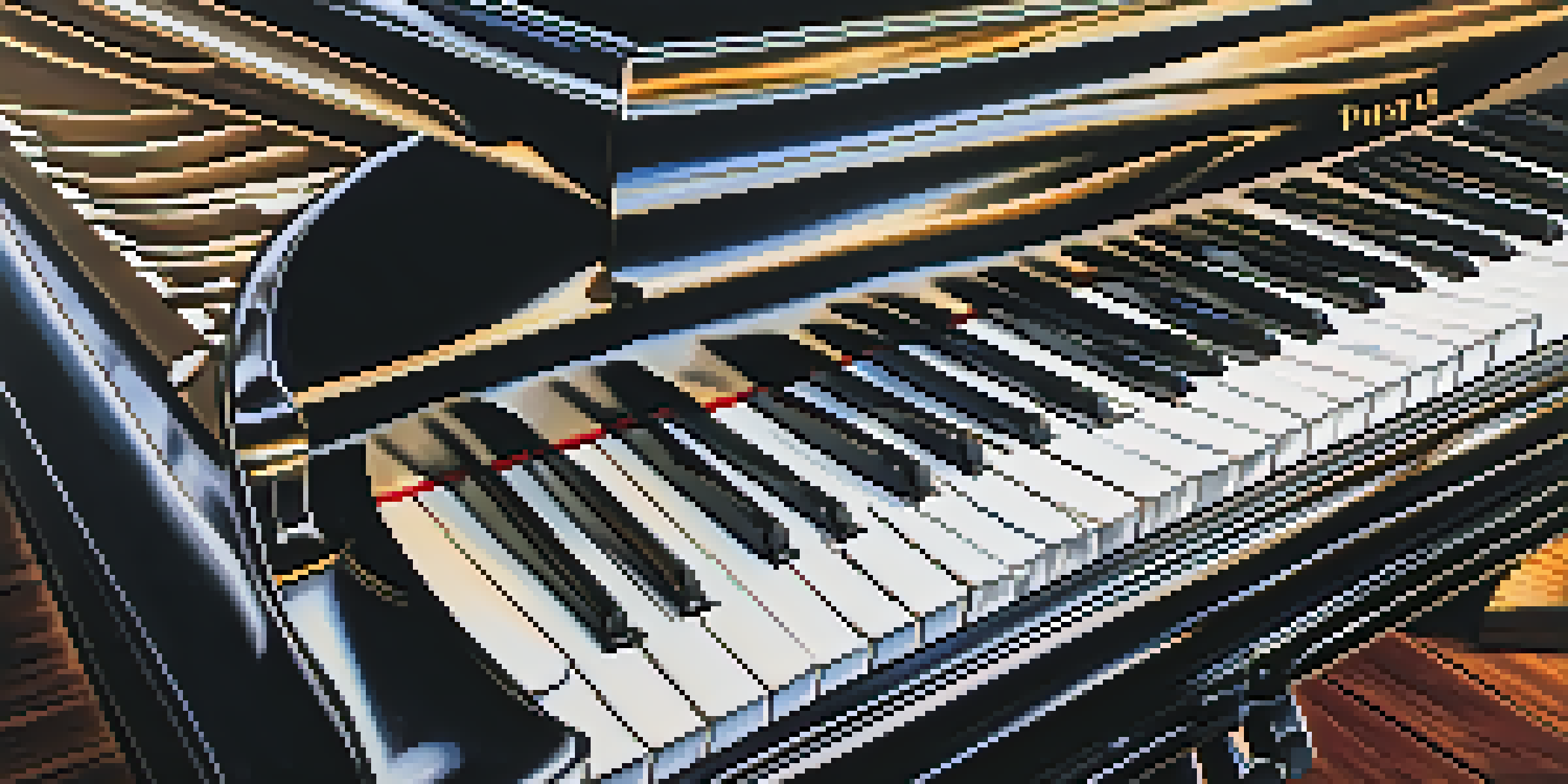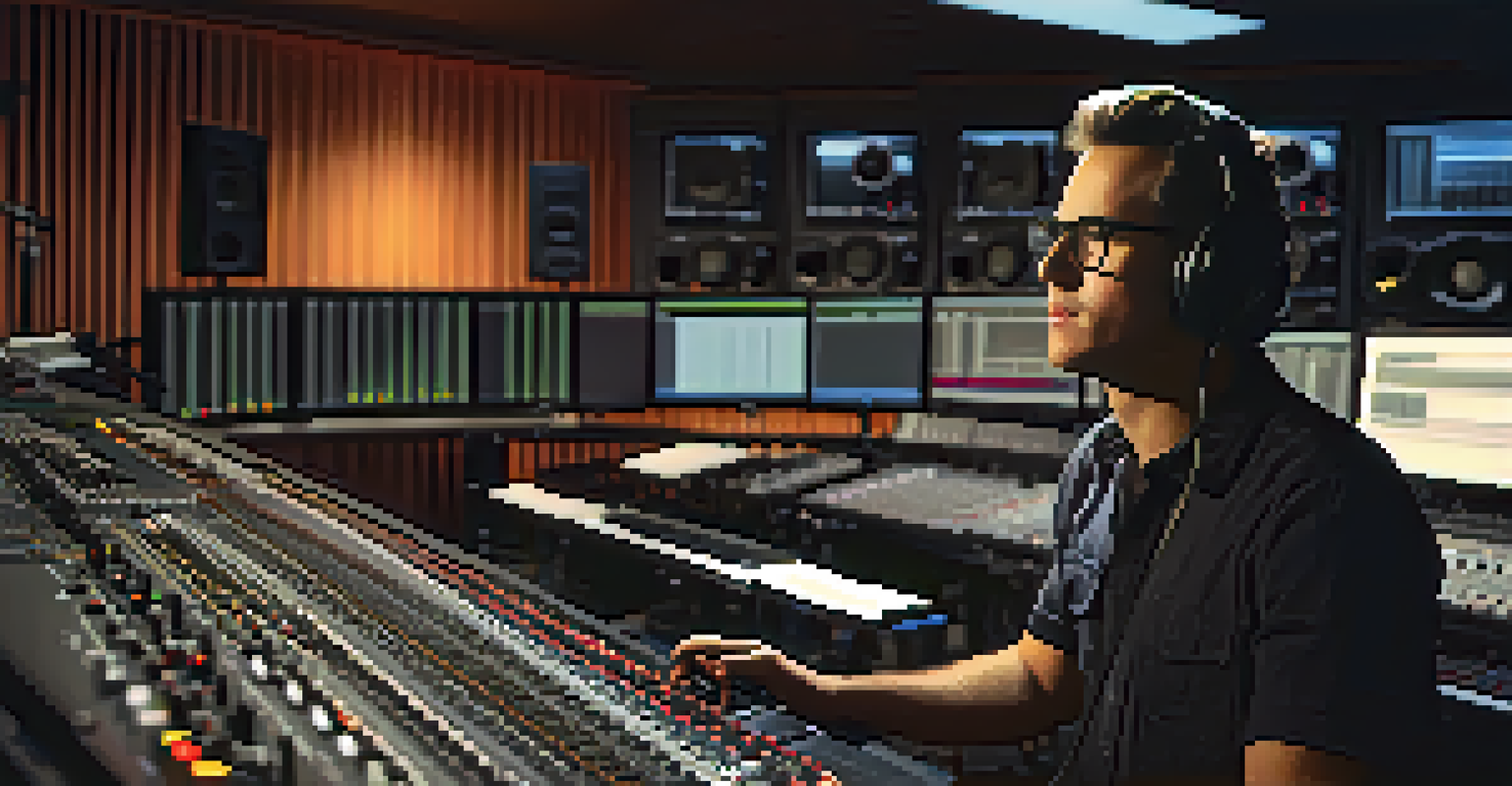How Frequency Affects Sound: The Physics Behind Pitch

What is Frequency in Sound Waves?
Frequency is a fundamental concept in sound physics, referring to the number of vibrations or cycles that occur in a sound wave per second. Measured in hertz (Hz), higher frequencies mean more cycles happen in the same time frame. For example, a sound wave with a frequency of 440 Hz vibrates 440 times each second, which corresponds to the musical note A above middle C.
Music is the shorthand of emotion.
To put it simply, think of frequency like the speed of a car on a highway. Just as a car that travels faster covers more distance in the same time, a sound wave with a higher frequency oscillates more rapidly. This rapid oscillation is what allows us to perceive different pitches in music and speech.
Understanding frequency is crucial for musicians and audio engineers alike, as it impacts how we create and manipulate sound. Whether you’re tuning a guitar or mixing a track, knowing how frequency works will help you produce clearer and more harmonious sounds.
The Relationship Between Frequency and Pitch
Pitch is the perceptual quality that allows us to classify sounds as 'high' or 'low', and it's directly influenced by frequency. In essence, a high-frequency sound is perceived as a high pitch, while a low-frequency sound is interpreted as a low pitch. For instance, a flute produces higher frequencies than a tuba, resulting in the flute having a higher pitch.

Imagine a piano keyboard: as you move from the left side (lower notes) to the right side (higher notes), you’re essentially shifting to higher frequencies. This transition is why playing higher keys can feel lighter and more vibrant, while the lower keys tend to have a richer, deeper quality.
Frequency Defines Sound Pitch
The frequency of sound waves determines their pitch, with higher frequencies corresponding to higher pitches.
This relationship is not just academic; it's practical. Musicians often use this understanding to compose and arrange music. By knowing how frequency affects pitch, they can create pieces that evoke specific emotions and reactions in their audience.
How Frequency is Measured
Frequency is typically measured in hertz (Hz), which indicates the number of cycles per second. For instance, a frequency of 1 kHz equals 1,000 cycles per second. This measurement helps us quantify sound waves and compare different pitches accurately.
The ear is the avenue to the heart.
In practical terms, tools like oscilloscopes and frequency analyzers are used to visualize sound waves and their frequencies. These devices can help sound engineers understand the sonic landscape, making it easier to adjust sound quality and clarity during recordings or live performances.
Understanding how to measure frequency is especially useful in various fields, from music production to acoustics. It allows professionals to create better sound environments, ensuring that music and speech are delivered with precision and clarity.
The Role of Harmonics in Sound
Harmonics are integral to our understanding of sound and pitch, as they are the frequencies that occur above the fundamental frequency of a sound wave. When a musical instrument plays a note, it doesn’t just produce one frequency; it generates a series of harmonics that enrich the sound, giving it character and warmth.
Think of harmonics as the colorful layers in an artist's painting. The base color (fundamental frequency) provides the primary hue, while the layers of paint (harmonics) add depth and dimension. This is why two instruments can play the same note but sound distinctly different; their unique harmonic overtones create their individual timbres.
Harmonics Enrich Sound Quality
Harmonics are additional frequencies that enhance the richness and character of musical notes, contributing to their unique timbres.
Musicians and sound designers often exploit harmonics to enhance their sound. By understanding how these additional frequencies work, they can shape their music to be more expressive and engaging for listeners.
Understanding Sound Waves and Their Behavior
Sound travels in waves, and these waves can behave in different ways depending on their frequency and environment. High-frequency sounds tend to travel in straight lines and are less likely to bend around obstacles, while low-frequency sounds can diffract, or bend, around barriers more easily. This difference is why bass notes can often be heard even when you’re not directly in front of a speaker.
Imagine dropping a pebble into a calm pond. The ripples created are like sound waves, spreading out in all directions. However, if you were to throw a larger rock, the waves would behave differently, demonstrating how frequency influences the wave's propagation.
This understanding of sound wave behavior is critical for various applications, from designing concert halls to creating better audio systems. By manipulating these properties, engineers can ensure that sound is distributed evenly and clearly in any environment.
The Impact of Frequency on Human Perception
Our ears are finely tuned to detect a wide range of frequencies, typically between 20 Hz and 20,000 Hz. This range allows us to enjoy everything from the deep rumble of thunder to the delicate chirping of birds. However, as we age, our ability to hear higher frequencies often diminishes, which can affect our appreciation of music and sounds around us.
Consider how a child might enjoy the high-pitched sounds of a toy more than an adult does. This is because their ability to perceive those frequencies is still intact, whereas adults may struggle to hear them as clearly. This shift in perception offers an interesting insight into how our auditory experiences change over time.
Frequency Impacts Audio Technology
Understanding frequency is essential in both music and technology, influencing everything from instrument tuning to audio equipment design.
Understanding the impact of frequency on human perception not only enriches our appreciation for sound but also guides audio engineers in creating inclusive audio experiences. By catering to the varying frequency sensitivities of different age groups, they can design soundscapes that resonate with a wider audience.
Applications of Frequency in Music and Technology
The principles of frequency and pitch are applied extensively in both music and technology. Musicians use their understanding of frequency when tuning their instruments or composing music, ensuring that their pieces sound harmonious and appealing. This knowledge is foundational for creating chords and melodies that resonate well together.
In technology, frequency plays a crucial role in audio equipment design, from microphones to speakers. Engineers must consider frequency response—the range of frequencies an audio device can reproduce—to create products that deliver high-quality sound. A speaker that can reproduce a wide frequency range will provide a more immersive listening experience.

Moreover, frequency modulation is a key concept in telecommunications, where it’s used to transmit audio signals over radio waves. This demonstrates how understanding frequency extends beyond music, affecting various aspects of our daily lives, from how we enjoy music to how we communicate with one another.